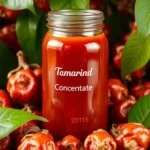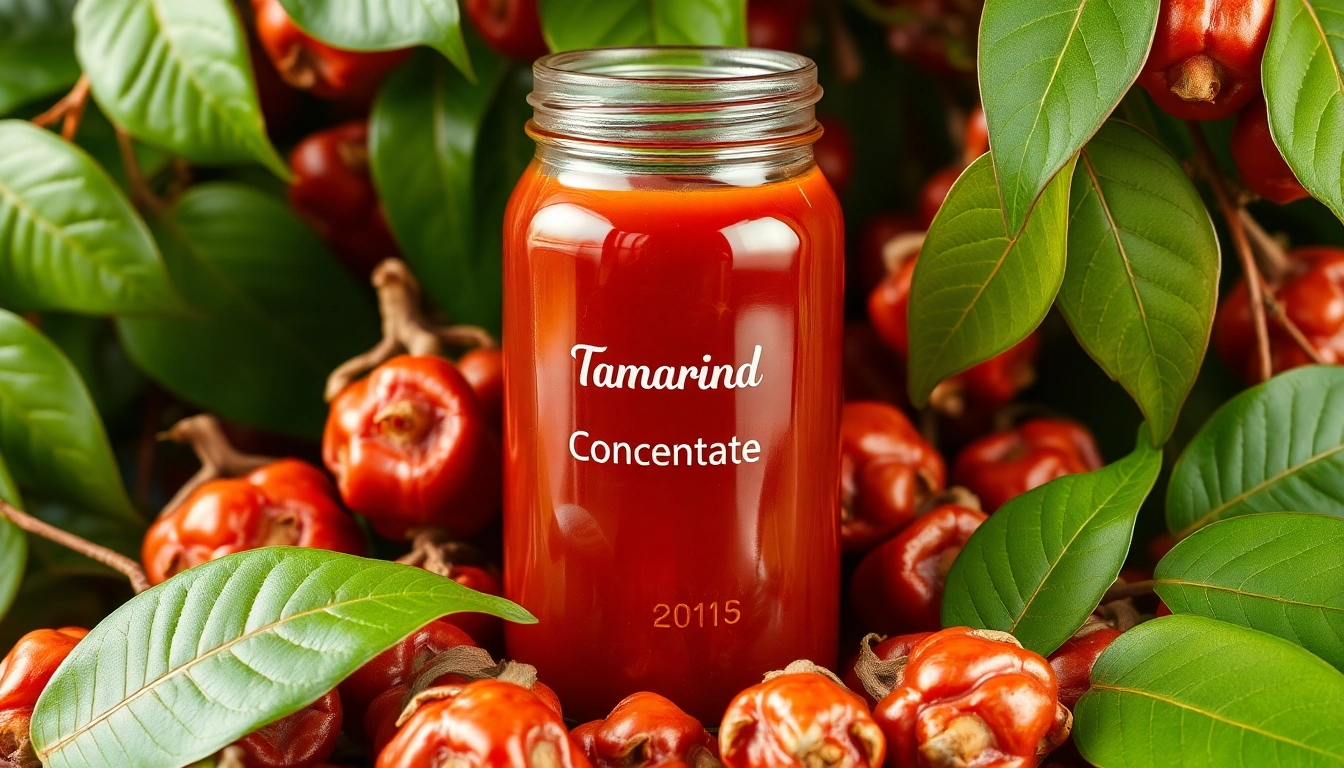Understanding Tamarind Concentrate: Key Features and Benefits
Tamarind concentrate has gained significant popularity among food manufacturers, professional chefs, and home cooks alike, owing to its unique flavor profile and versatile culinary applications. As a concentrated form of tamarind, it offers a potent, tangy flavor that enriches a wide array of dishes, reducing preparation time while maintaining authentic taste. At Tamarind Concentrate, quality is paramount, and choosing a reputable supplier ensures that your products meet international standards, possess superior flavor, and retain their nutritional integrity.
Tamarind itself is a tropical fruit renowned for its sweet-sour taste, and when processed into concentrate, it becomes a powerful ingredient with concentrated flavor and extended shelf life. This section explores the intricate manufacturing processes, key attributes, and the advantages of incorporating tamarind concentrate into your culinary offerings.
What Is Tamarind Concentrate and How Is It Made?
Tamarind concentrate is a thick, viscous liquid derived from raw tamarind pulp that has been processed and refined to enhance its flavor and shelf stability. The manufacturing process involves meticulous selection of ripe tamarind pods, peeling, pulping, and then pasteurizing the pulp to eliminate microbial contamination. The pulp is then concentrated through controlled evaporation under vacuum, which preserves the nutritional content and flavor profile while reducing moisture content significantly.
Quality manufacturing, such as that by Spice Nest, emphasizes maintaining the authentic tangy and slightly sweet characteristics of tamarind, which are essential for culinary use. Modern facilities ensure that the concentrate is free from additives, preservatives, and impurities, aligning with international export standards. For consumers and businesses, investing in premium tamarind concentrate guarantees consistency, superior flavor, and safety.
Notably, the extraction and concentration process also preserves vital nutrients including tartaric acid, vitamins, and minerals, enhancing the health benefits associated with tamarind. The result is an ingredient that is both flavorful and nutritious—a true staple for global cuisines.
Health Benefits and Nutritional Profile of Tamarind
Beyond its culinary appeal, tamarind contains a wealth of health-promoting compounds. It is rich in antioxidants, including flavonoids and polyphenols, which combat oxidative stress. Its high tartaric acid content aids digestion and helps regulate blood sugar levels, making it a beneficial addition for health-conscious consumers.
Tamarind concentrate also provides dietary fiber, which supports digestive health and promotes satiety. Additionally, it is a good source of essential vitamins such as vitamin C, B vitamins, and minerals like magnesium, potassium, and iron. These nutrients contribute to immune support, cardiovascular health, and overall wellness.
Industrially, tamarind’s natural properties help in food preservation, reducing the need for artificial preservatives. As a concentrated form, its efficacy is magnified, allowing consumers to incorporate health benefits into their diet effortlessly.
Choosing a certified and high-quality tamarind concentrate ensures that these health benefits are retained, making it a smart choice for health-aware manufacturers and consumers alike.
Differences Between Tamarind Paste and Concentrate
Though often used interchangeably, tamarind paste and tamarind concentrate serve different culinary and processing purposes. Tamarind paste usually refers to a less processed product, containing pulp with seeds and skin, often in a semi-solid or gel form. It is suitable for recipes requiring fresh or lightly processed tamarind.
Conversely, tamarind concentrate is more intense in flavor, with a thicker, more viscous consistency that signifies a higher level of processing and reduction. It offers convenience in terms of storage, dosing, and consistency for industrial and commercial use.
For example, in Indian and Asian cuisines, tamarind paste is ideal for traditional recipes where a milder flavor is desired, while tamarind concentrate is preferred in commercial sauces, beverages, and ready-to-use formulations due to its potency and shelf stability. Selecting the appropriate form depends on your culinary needs, desired flavor strength, and production scale.
Applications of Tamarind Concentrate in Cooking
Enhancing Indian and Asian Recipes
Tamarind concentrate is indispensable in authentic Indian, Thai, and Indonesian cuisines. It forms the backbone of many iconic dishes such as sambar, rasam, pad thai, and sambal, imparting the signature tanginess that defines these flavors. Its concentrated form allows chefs and manufacturers to achieve consistent results without the variations that can occur with fresh tamarind pods.
For Indian cooking, tamarind concentrate enhances the depth of flavor in lentil-based dishes, chutneys, and pickles, creating a harmonious balance of sweet, sour, and spicy elements. In Thai cuisine, it is key to crafting sauces and curries with authentic taste profiles, while in Indonesian dishes, tamarind adds complexity and richness.
Creative Uses in Sauces, Chutneys, and Marinades
Beyond traditional uses, tamarind concentrate is a versatile ingredient in modern culinary innovations. It can be incorporated into sauces and chutneys to add depth and tang, or used as a marinade base to tenderize meats and seafood while imparting a distinct flavor. Its acidity enhances the overall flavor profile, making dishes more vibrant.
For example, chefs often blend tamarind concentrate with honey or sugar, garlic, and chili to create delicious dipping sauces. It also serves as a natural preservative in pickling, extending shelf life and intensifying flavors.
Tips for Incorporating Tamarind Concentrate in Daily Cooking
To maximize the flavor, dosing should be precise—start with small amounts, tasting and adjusting as needed. Typically, 1-2 teaspoons of tamarind concentrate can replace a tablespoon of traditional tamarind pulp. Use warm water to dilute and mix thoroughly before adding to dishes to ensure even distribution.
For consistent results, maintain good storage practices—keep the concentrate in airtight containers away from direct sunlight to preserve aroma and flavor, which will be discussed further in the packaging and storage section.
Choosing the Right Tamarind Concentrate Supplier
What to Look for in Quality and Certifications
Selecting a reliable supplier is critical for ensuring product quality, safety, and compliance with international standards. Top manufacturers like Spice Nest are certified by certifications such as ISO, HACCP, and organic certifications, which guarantee adherence to strict quality control processes.
Look for suppliers with transparent sourcing practices, traceability, and quality assurances, including laboratory testing reports for pesticide residues, microbial safety, and flavor purity. These certifications translate into trustworthiness, essential for brand reputation and consumer safety.
Comparing Pricing, Packaging, and Shelf Life
Price competitiveness is important, but it should not compromise quality. High-grade tamarind concentrates are often available in bulk packaging—such as drums or food-grade pouches—that facilitate preservation and ease of distribution. Packaging options that prevent oxidation and contamination extend shelf life, sometimes up to 24 months or more.
Consider factors like MOQ (minimum order quantity), packaging sizes suited to your needs, and logistic convenience. Suppliers offering flexible packaging, tamper-proof seals, and user-friendly dispensing mechanisms add value.
Trusted Exporters and Brand Reputation
Leading exporters like Spice Nest have established a reputation through consistent product quality, timely delivery, and excellent customer service. Their participation in major food exhibitions globally, such as Biofach, underscores their credibility and commitment to international standards.
Always review customer feedback, case studies, and export history. Building a partnership with a trusted exporter ensures product authenticity, supports your supply chain stability, and facilitates entry into international markets.
Packaging and Storage for Maximum Freshness
Optimal Packaging Options Available
Proper packaging is key to maintaining the aroma, flavor, and shelf life of tamarind concentrate. High-quality facilities utilize air-tight, UV-protected containers, often in PET bottles, pouches, or metal drums with sealing caps. Some suppliers also offer modified atmosphere packaging to prolong freshness further.
For retail, sachets and small jars ensure convenience for consumers, while bulk packaging suited for food manufacturers facilitates large-scale processing.
Proper Storage Guidelines to Preserve Aroma and Flavor
Storage conditions significantly impact product longevity. Tamarind concentrate should be kept in a cool, dry place away from direct sunlight. Once opened, refrigeration is recommended to prevent oxidation, microbial growth, and flavor deterioration. Seal containers tightly after each use.
Consistent temperature and humidity control are critical in both storage and transit, especially during exports. Proper handling preserves the natural tang and prevents spoilage, ensuring consumer satisfaction.
Handling Tips for Bulk and Retail Purchases
For bulk buyers, transferring the concentrate into smaller, moisture-proof containers for day-to-day use can help maintain quality. Avoid contamination by using clean, dry utensils when dispensing. Label all containers with production and expiry dates to manage stock rotation effectively.
Market Trends and Future Outlook for Tamarind Concentrate
Growing Demand in Global Food Markets
The international food industry’s shift towards authentic, natural ingredients has propelled the demand for tamarind concentrate. As consumers increasingly seek clean-label, preservative-free products, natural concentrates like tamarind meet this need, especially in Asian, Middle Eastern, and Western markets.
Market studies reveal a compound annual growth rate (CAGR) of around 7-9% in the global tamarind extract segment, driven by rising popularity in sauces, beverages, and processed foods.
Innovations in Packaging and Processing
Advances in packaging such as aseptic filling, biodegradable materials, and vacuum-sealing techniques help extend shelf life and reduce environmental impact. Processing innovations like cold-press extraction and micro-filtration maintain natural flavors and nutrients, elevating product standards.
Opportunities for Exporters and Food Manufacturers
Given the expanding global markets, exporters from trusted sources like Spice Nest are well-positioned to fulfill rising demand. Developing innovative products that incorporate tamarind concentrate—such as ready-to-eat meals, seasoning mixes, and health drinks—opens avenues for market differentiation and revenue growth.
Staying ahead involves continuous research, quality assurance, and forging partnerships at international food trade fairs—like Biofach—to showcase capabilities and expand global footprint.









